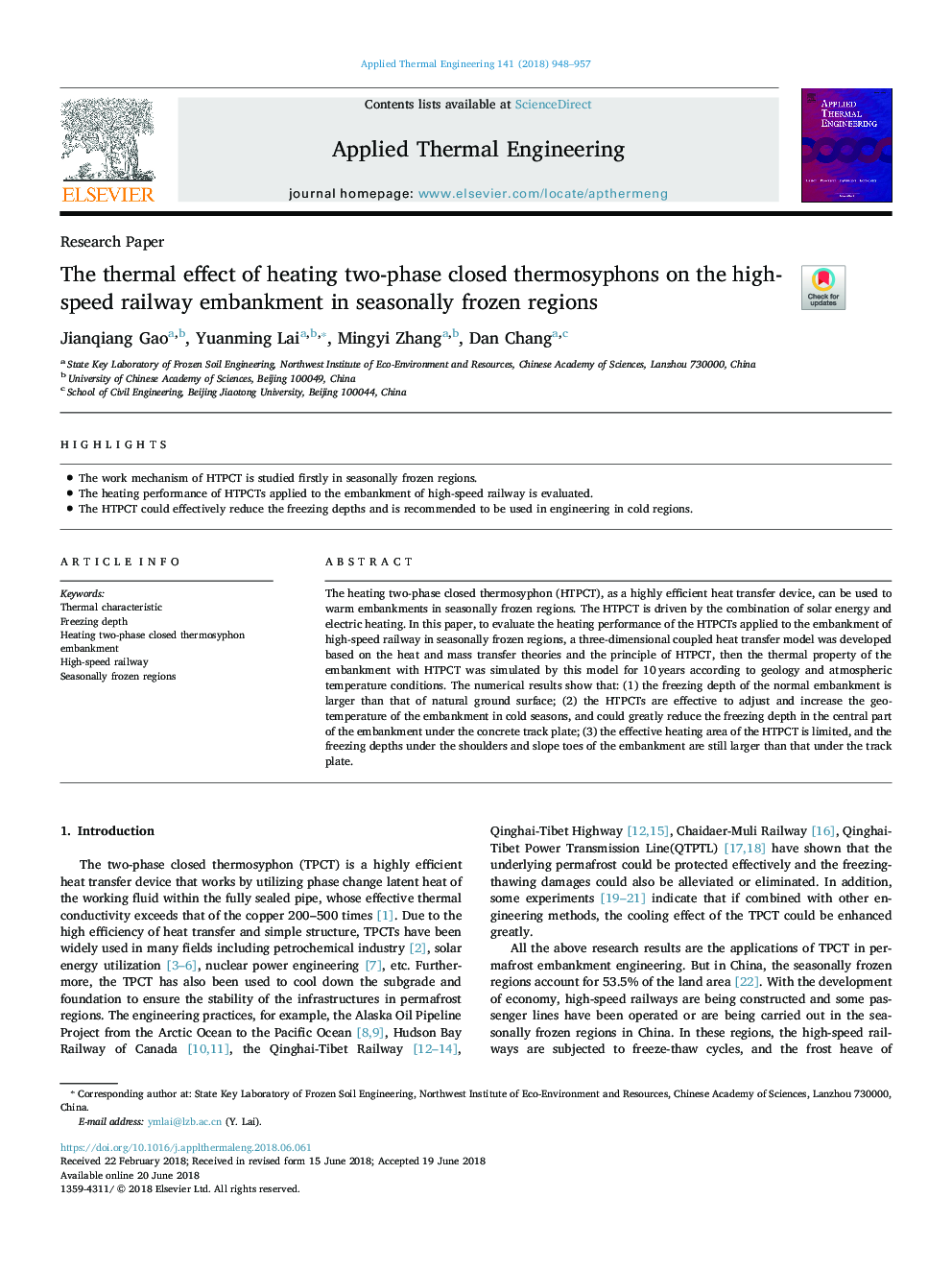| Article ID | Journal | Published Year | Pages | File Type |
|---|---|---|---|---|
| 7045042 | Applied Thermal Engineering | 2018 | 10 Pages |
Abstract
The heating two-phase closed thermosyphon (HTPCT), as a highly efficient heat transfer device, can be used to warm embankments in seasonally frozen regions. The HTPCT is driven by the combination of solar energy and electric heating. In this paper, to evaluate the heating performance of the HTPCTs applied to the embankment of high-speed railway in seasonally frozen regions, a three-dimensional coupled heat transfer model was developed based on the heat and mass transfer theories and the principle of HTPCT, then the thermal property of the embankment with HTPCT was simulated by this model for 10â¯years according to geology and atmospheric temperature conditions. The numerical results show that: (1) the freezing depth of the normal embankment is larger than that of natural ground surface; (2) the HTPCTs are effective to adjust and increase the geotemperature of the embankment in cold seasons, and could greatly reduce the freezing depth in the central part of the embankment under the concrete track plate; (3) the effective heating area of the HTPCT is limited, and the freezing depths under the shoulders and slope toes of the embankment are still larger than that under the track plate.
Related Topics
Physical Sciences and Engineering
Chemical Engineering
Fluid Flow and Transfer Processes
Authors
Jianqiang Gao, Yuanming Lai, Mingyi Zhang, Dan Chang,
